The reasons for the defeat of the Red Army in the initial period of the war (a brief overview). Part of 1
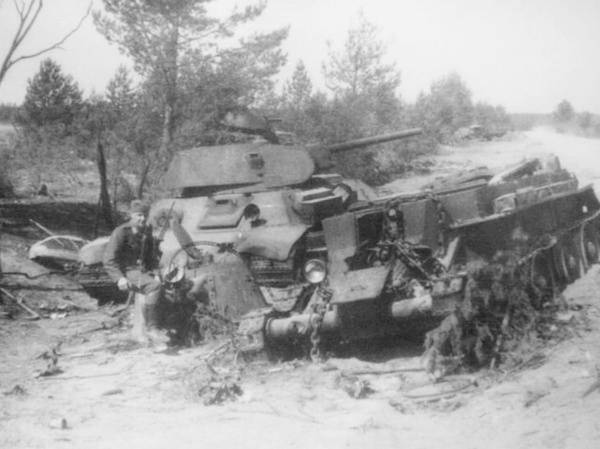
Since the beginning of the Great Patriotic War, 75 years have passed, but no one gave a clear answer to the question: why did we suffer such great losses since the beginning of the war and retreated all the way to Moscow? Could it all be different? Was the Red Army able to repel an attack by fascist Germany with fewer losses?
22 June 1941 became our black and tragic date. stories. It was from that day that Soviet history was divided into two large periods: before the war and after the war.
Many historians, writers and ordinary people have asked and are asking themselves today: why wasn’t the country ready for war, although they knew it was inevitable? Why was the Red Army, strong at that time, unable to wage a victorious war at the initial stage? How did it happen that we lost so many people? Why did the country's top leadership not take decisive action to prepare to repel aggression?
Everyone answers these questions in their own way. Some speak of surprise attacks. Others knew about the attack, but did not have time to get ready in time. Still others blame Stalin or the top military leadership. The fourth cause of our failures is the army’s unpreparedness for defensive actions. Fifth, they say that the process of rearmament was under way, and therefore we did not have equipment equal to German, etc. Each of them is right. All of the above can be attributed to the reasons for the defeat at the beginning of the war. But on the other hand, other questions arise: why was the attack sudden? What did the intelligence do? Why the army did not know how to defend? Etc.
Definitely answer all these questions is difficult and impossible. There is no one universal reason. There are many of them, and all of them only in a complex explain our defeats.
The purpose of this article is to recall briefly what the Barbarossa plan was, the general course of events in the initial period of the war, and to consider in more detail the complex of the main (in the author's opinion) causes of the defeat of the Red Army from 22.06 to 10.07.1941.
Plans and forces of the warring parties
Germany. The main goal of the war against the USSR was that the German imperialists put the destruction of the world's only socialist state, the conquest of its territory and the enslavement of the peoples of the Soviet Union.
The plan of attack on the Soviet Union and the preparatory measures for its implementation, the German command began to develop and conduct in 1940. Initial instructions for the development of the plan were given by Hitler in July. 9 of August was issued an order "On construction activities in the East" [Anfilov V.A. The beginning of World War II], according to which the future theater of war was to be prepared: the construction of barracks, highways, airfields, railways, communication lines, warehouses, training grounds and other facilities. 18 December 1940 was signed by Hitler's main directive (No. 21) of the “Barbarossa Plan”, which was later supplemented by other directives and orders.
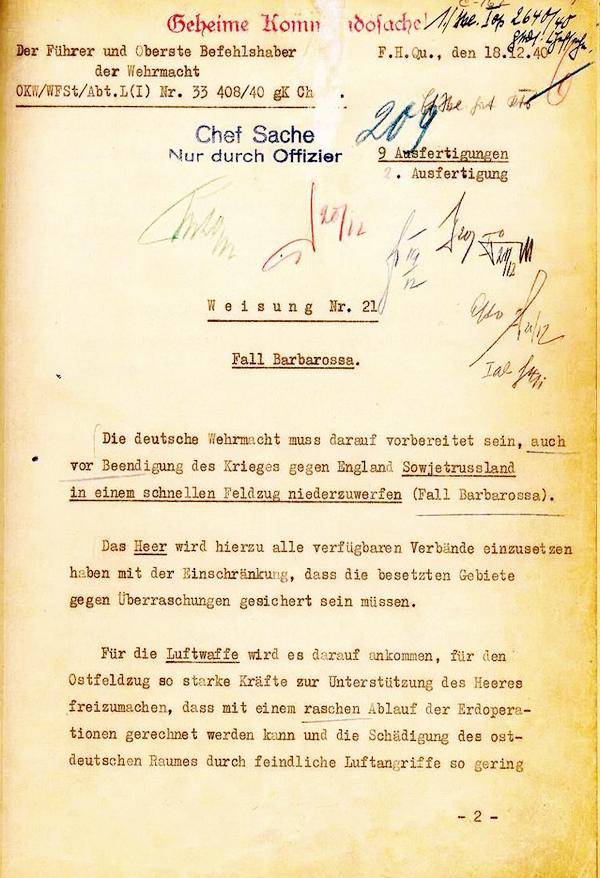
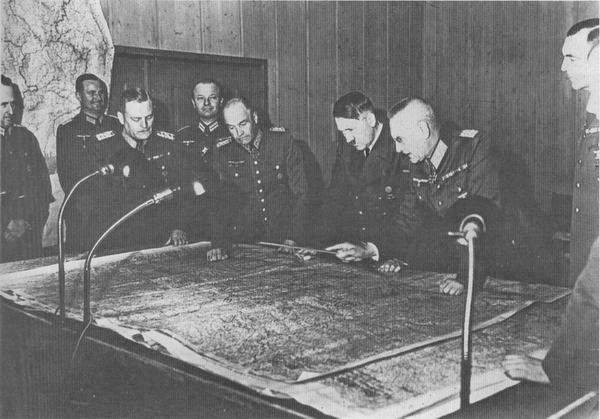
The fascist German command planned against the Soviet Union to conduct a “lightning war” (“blitzkrieg”). They believed that this war would take no more than 3-4 months, and therefore they hoped with a sudden and powerful blow to defeat the Soviet troops in the border areas and open their own path for unhindered advance into the Soviet Union. The immediate strategic goal of the Hitler strategists was the destruction of Soviet troops west of the r. Western Dvina and Dnieper. It was decided to conduct an offensive in three strategic directions: Leningrad, Moscow and Kiev. “The ultimate goal of the operation, as indicated in the Barbarossa plan, is to isolate itself from Asian Russia along the Arkhangelsk-Volga general line ... If necessary, the last industrial region remaining in Russia in the Urals can be paralyzed with aviation». [Dashichev V.I. Strategic planning of aggression against the USSR, s.30].
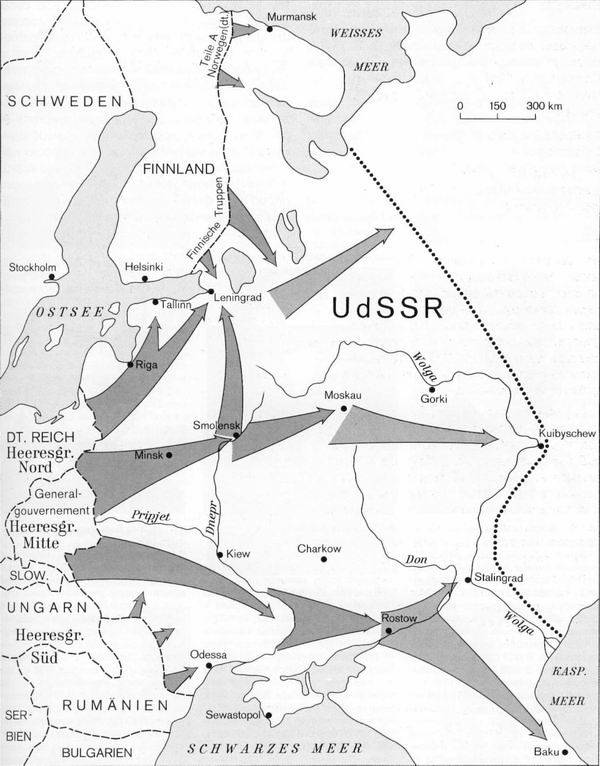
The concentration of Nazi troops to attack the Soviet Union began in the summer of 1940. However, it was carried out most intensively from the beginning of 1941. After the directive on concentration of forces was issued on January 31. In this directive, the main command of the ground forces indicated the common goal of the war, set the task to army groups and field armies and tank the groups included in their composition were determined by the methods of interaction between the ground forces and aviation. In the appendices to the directive, the distribution of forces by army groups was indicated, the dates for the concentration of troops and their transfer from the areas of deployment and unloading to the waiting areas were established. They cited data on the situation of Soviet troops in the border districts and indicated objects that German aviation was supposed to strike in the early days of the war.
The concentration of troops was carried out mainly by rail. Ensuring the secrecy of strategic deployment was achieved by keeping in the strictest confidence of all preparatory activities for the war and a wide system of disinformation. The special "directive on enemy disinformation", signed by 15 February 1941, stated: "The strategic deployment of forces for Operation Barbarossa should be presented in light of the largest disinformation maneuver in history of wars to divert attention from the latest preparations for the invasion of England." So, the fascist German command was concentrating forces in the East in the form of a disinformation event, ostensibly to conceal preparations for the landing of a naval landing force in England. In order to create an impression of preparations for the landing of troops in England from the coast of Norway and France, special operations "Shark" and "Harpoon" were developed and carried out in parallel with the concentration of troops in the east. [Anfilov V.A. The beginning of the Great ..., p. 1].
Simultaneously with the implementation of disinformation and disguise measures, the Hitlerite command carried out a great deal of work on organizing and conducting reconnaissance in order to obtain information about the quantity and quality of the Soviet Armed Forces, the grouping of troops on the western borders and the nature of the fortifications. The department of aerial photography of the Air Force headquarters periodically conducted aerial surveys of the border regions of the Soviet Union. German intelligence also tried to uncover the base of our air force. Special attention was paid to the western direction. The German espionage network deployed throughout the border strip allowed the enemy to uncover many military targets, and in the early days of the war helped disrupt the management of Soviet troops.
10 June 1941 formations and units designed to wage war against the USSR began to be withdrawn to waiting areas equipped at a distance from the border in 7-20 km for infantry and in 20-30 km for tank and motorized divisions. Starting position for the offensive of the first echelon division began to occupy the 18 June. The deployment of the Nazi troops was completed before June 21. In addition to the German troops, the German satellite troops also prepared for the attack on the Soviet Union: Finland, Romania and Hungary. [The history of World War II 1939 - 1945: In 12-t. T. 4. - M, 1975, p.30].
In accordance with the Barbarossa plan, the German command created three large groups, each of which was to advance in one of the strategic directions.
On the sector from Memel (Klaipeda) to Goldap, on the 230-kilometer front, Army Group North was deployed (Commander-General Field Marshal von Leeb) consisting of 16 and 18 Armies and 4-TG (total 29 divisions, including including 3 tank and 3 motorized). Army Group "North" delivered the main blow from the Tilsit region in the general direction of Daugavpils, Pskov, in order to crush the Soviet troops in the Baltic States and create favorable conditions for a further offensive on Leningrad [Anfilov V.A. The beginning of the Great ..., p. 2].
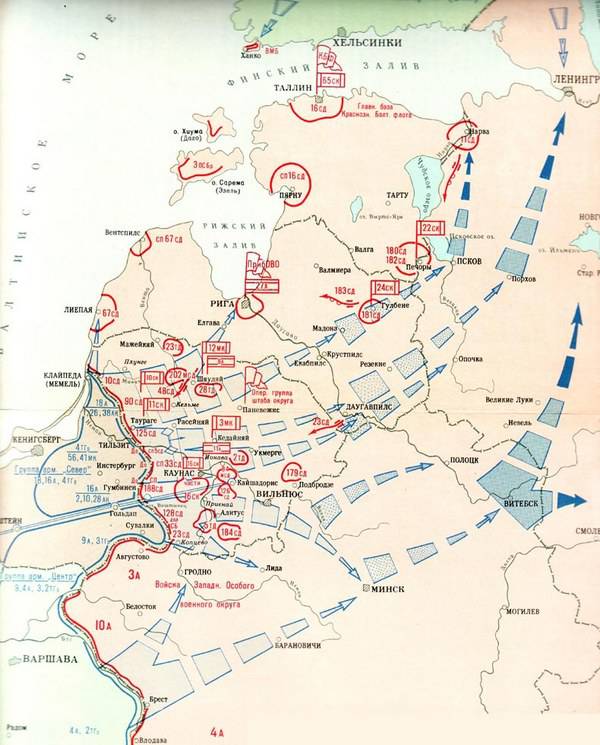
From Goldap to Wlodawa, the most powerful army group “Center” was concentrated on a 550-kilometer stretch (commander Field Marshal von Bock). It included the ninth and fourth armies, the third and second TGs (a total of 50 divisions, including 9 armored, 6 motorized and one cavalry and 2 brigades). Two shock groups were created in this group of armies, which, advancing in convergent directions, were to unite in the Minsk region with the aim of encircling and destroying Soviet troops in Belarus. Subsequently, the troops of this army group were to develop an offensive in the general direction of Smolensk, Moscow. The advance of Army Group Center, which dealt the main blow, was supported by the 2nd Air fleet, in which there were 1670 aircraft.
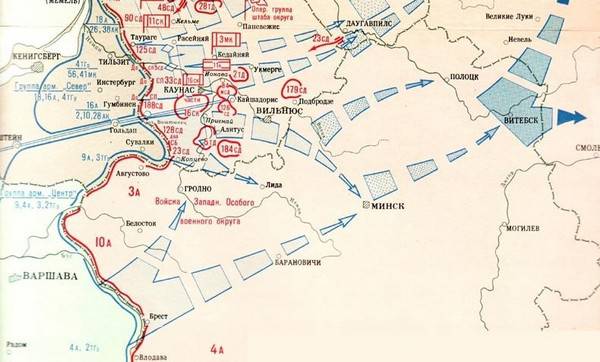
At the turn of Lublin to the mouth of the river. The Danube, the length of which reached 780 km, prepared for the offensive Army Group South (Commander Field Marshal von Rundstedt) consisting of 6, 17 and 11 of the German, 3 and 4 of the Romanian armies, 1 and TG Hungarian corps (total 57 divisions, including 5 tank and 4 motorized, and 13 brigades). The troops of this group, advancing in the general direction of Kiev, were to destroy the Soviet units in Western Ukraine. With access to Kiev, it was planned to seize a bridgehead on the left bank and advance mobile units along the right bank of the Dnieper in order to prevent the withdrawal of Soviet troops across the river, and then to destroy them from the front and rear. This army group was supposed to support the 4 th air fleet and the Romanian aviation (up to 1300 aircraft) [Dashichev V.I. Strategic planning ..., p.36-37].
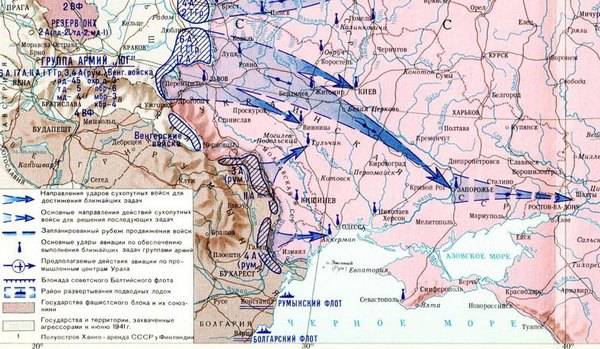
In addition to these army groups, the German army “Norway” and the Finnish armies: “South-Eastern” and “Karelian” were concentrated on the territory of Eastern Finland. The first of them was to advance on the Ukhta, Kandalaksha and Murmansk directions, and the Finnish armies - on the Karelian Isthmus and to the north of it, in order to unite with the troops of the Army Group "North" in the Leningrad region and on the r. Svir. The fighting of this group of forces (total 21 infantry division and 3 brigades) was supported by the 5 air fleet and Finnish aviation [Veremeev Yu.G. Defense in the North].
While hoping to defeat the Soviet Union in one fleeting campaign, Hitler's command sought to use the maximum force in the first strike, in order to defeat the main forces of the Red Army at the beginning of the war. To this end, the enemy deployed all field armies and tank groups in one echelon. The reserve ground command of the ground forces were 24 divisions, which were intended mainly to strengthen the army groups "Center" and "South" [Krivosheev G.F. On the eve of ,.16].
In total, enemy groups deployed against the Soviet Union included 181 division and 18 brigades, 3500 tanks, over 47 thousand guns and mortars, around 5000 aircraft. The total number of personnel of the armed forces of fascist Germany and its satellites deployed to act against the USSR, reached 5500000 people [Russia and the USSR in the wars of the twentieth century: Statistical research, s.219]. Other sources give other data. So, E. Molo speaks only of 153 German divisions totaling 2500000 people [Molo E. Armed Forces of the Second World War, c.187].
Thus, as a result of carrying out a whole complex of preparatory measures, fascist Germany launched large attack groups on the Soviet border at the beginning of the attack on the USSR, which were well-armed and equipped with everything necessary for the needs of the war. The fascist German troops to 22 June 1941 were in a state of full combat readiness to attack the Soviet Union.
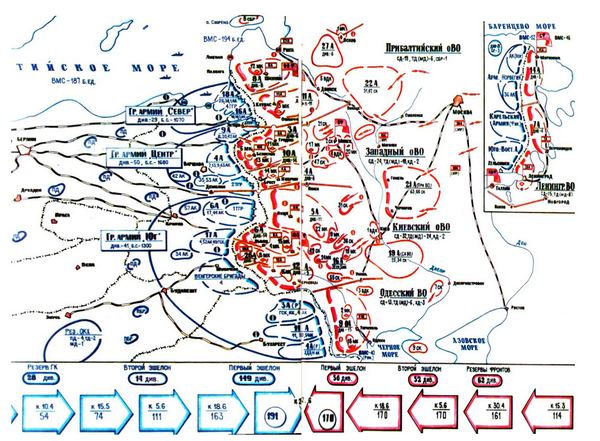
THE USSR. Given that Hitler Germany would sooner or later attack the Soviet Union, the Soviet command was preparing troops to defend its borders. [Fedorov A. Unfading feat of the Armed Forces of the USSR, p. XXUM].
It was assumed that in the event of a perfidious attack, the fascist German army would strike the main blow, most likely from East Prussia [A.A. Martirosyan The tragedy of 22 Jun: Blitzkrieg or treason? C. 240]. In this regard, since February 1941 in the Baltic States have been intensively defensive work. The People's Commissar of Defense pointed out to the PribOVO Military Council that the construction of fortified areas to cover by East Prussia is the most important government task for 1941 for the district Anfilov V.A. The beginning of World War II c.2]. The Soviet command did not rule out the possibility of delivering a powerful strike from the area south of Polesye on the Kiev direction. Defense construction in Western Ukraine has developed in the same broad front as in the Baltic States [Zyuzin E.I. About the basics of the strategic deployment of the Red Army before the war, s.20].
By the spring of 1941, the General Staff developed the “Plan for the Defense of the State Border of 1941”, which in early May was brought to the military councils of the border districts. The troops of these districts were assigned the task of preventing the invasion of the ground and air enemy into the territory of the Soviet Union, stubborn defense in the fortified areas to cover the mobilization, concentration and deployment of troops. Anfilov V.A. The beginning of World War II c.2]. According to this plan, cover plans were drawn up in the counties. The destruction of the enemy groups that had broken through was supposed to be carried out by the second echelon of the covering armies - mechanized corps, anti-tank artillery brigades and aircraft. After repelling an enemy attack in the border zone, it was planned, under the special instructions of the High Command, to transfer military operations to the enemy’s territory [Koval M. To the history of border battles in Ukraine, s.10-12].
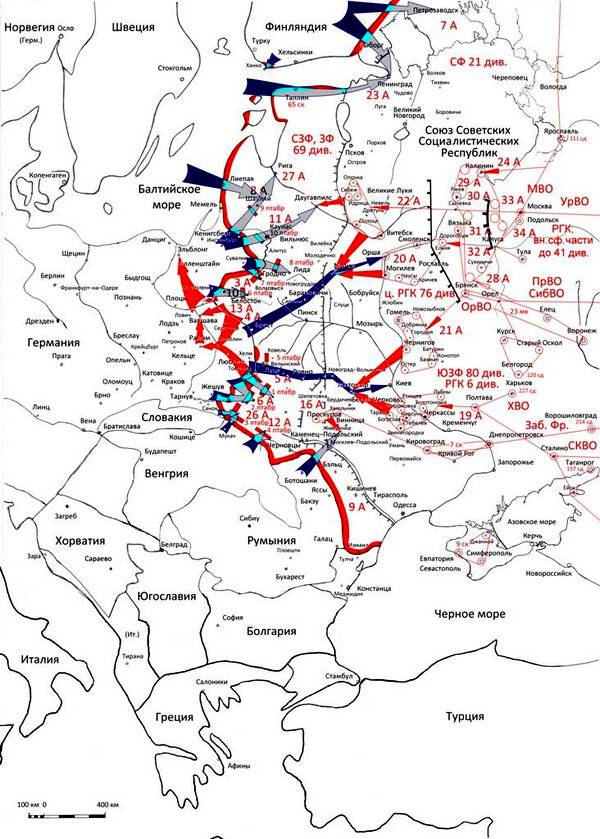
Since the Soviet Union was not going to attack, in the western border districts there were only covering troops. Their task was to prevent the invasion of enemy troops on the territory and in the airspace of the USSR.
Those units that were not part of the covering armies were located in the depths of the territory of the districts at a distance of 400 km from the border. In the first echelon of covering armies, as a rule, rifle units were allocated, and in the second - mechanized corps. The air cover of the ground forces was assigned to the aviation of the border districts. On the eve of the war, the covering troops were in garrisons and camps located at a distance of 20-150 km from the border, which was guarded by a few border detachments. In addition to border guards, in many sections of the border there were engineer and construction battalions together with rifle subunits separated from combined-arms units to carry out engineering work in order to strengthen the basement. [Anfilov V.A. Beginning of World War II, c.3].
In the pre-war years, during the summer period of training troops, it was widely practiced to hold district, army and corps assemblies of various branches of troops as part of units. Such actions can be justified only by the fact that recruits were called up in the spring, and they had to be trained. For example, in the Kiev Special Military District in early June 1941 from rifle divisions artillery regiments, as well as anti-tank and anti-aircraft battalions were withdrawn to artillery training camps (army and corps polygons). Special units of divisional units and rifle regiments also underwent training. Part of the rifle divisions was at that time in defense construction. In the divisional camps there were only some rifle divisions and headquarters. Therefore, many infantry divisions were divided and, in fact, they were not combat-ready compounds. [Zakharov M.V. The General Staff in the prewar years, with. 56].
Thus, it is possible to draw a general conclusion that by the time of the attack of fascist Germany on the Soviet Union all the planned measures to increase the combat readiness of the Soviet Armed Forces were not complete. The troops of the border districts were not sufficiently prepared to repel the sudden attacks of the aggressor, despite the fact that they had everything necessary for this [Kiev Kiev Red Banner: Essays on History. 1918 - 1988, p.140]. The rifle divisions of the first echelons of the covering armies were far from the border and therefore could not prevent the invasion of enemy troops into the territory of the USSR. By the beginning of the war, the troops of the border districts were not ready to repel an enemy strike. In addition, they have not completed the re-formation and re-equipment of the new material part. [Liddel Gard B. World War II, c.153]. All this made it extremely difficult to fight a strong and insidious enemy who possessed an experienced army deployed in advance on the borders of the USSR and who took advantage of the surprise attack on the Soviet Union.
The beginning of the war. Border Battles (22.06 - 10.07.1941)
Himself covered their homeland?
But no one will tell us about this in the reports
After all, we died in the first battle.
V. Tretyakov "It was the fourth day of the war."
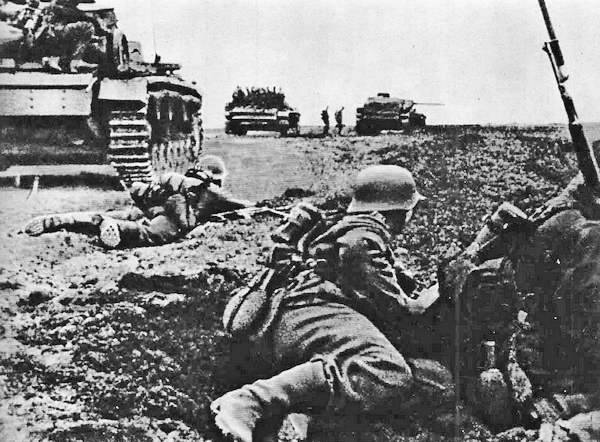
This issue is covered in sufficient detail, so we’ll dwell on it very briefly.
On the night of 21 on 22 on June 1941, the People's Commissar of Defense of the USSR sent the Directive No. XXUMX to the commanders of the border districts. It was prescribed that during the night of June 1 bring the troops on full alert and take up positions on the border, and be prepared to repel the German attack [A.A. Martirosyan The tragedy of 22 Jun: Blitzkrieg or treason ?, c.143-144]. In the districts, this directive was received at around one in the morning on June 22. In 2: 00 25 minutes, district commanders sent similar orders to the armies. These orders reached the troops with great delay. Therefore, practically until the attack of the Nazis, the troops could not follow these instructions. [Sharov A. “I did not commit adultery ...”, c.10].
It should be noted here that another 18 of June in the districts was sent encryption about the dispersal of aviation in the border strip and the transfer of headquarters to field control points.
The General Staff ordered the chairman of the SNK to order the commanders of the western military districts to take measures to increase the combat readiness of the troops. The commanders of the Baltic, Leningrad, Western, Kiev, and Odessa military districts, as well as the Baltic, Black Sea, and Northern fleets, received a corresponding order signed by Army General of the Army General GK. Zhukov. This cipher telegram was not found in the archives, but the mention of it is contained in the materials on the charges of the command of Zapov, where the testimony of the chief of communications of Zapov, Major General A.T. Grigorieva: “And after the telegram of the Chief of General Staff from 18 of June, the district troops were not alerted ...”. Similar testimonies are also contained in the answers of generals polled after the war, who commanded before the war in Western districts (materials of the commission under the leadership of Colonel-General A.Pokrovsky), as well as in separate documents of the command of the Baltic Special Military District, reports of fleet commanders about bringing the fleets in combat readiness number 2, dated 18 June, in particular, in the "Order of the Commander of the Baltic Special Military District number 00229 from 18 June 1941, the command and troops of the district about AI activities in order to quickly bring the embattled district military operations theater. " In accordance with it, the county troops were to occupy the initial areas (concentration areas) by June 21. [Makovsky V.B. Cover the state border on the eve of the war, c.54].
In the cipher telegram of the chief of the General Staff G.K. Zhukov from 19 June to the commander of the Kiev Special Military District, Colonel-General MP Kirponos was instructed: "By 22.06.1941, the administration should go to Ternopil, leaving the subordinate district administration in Kiev ... To keep the isolation and transfer of front control in the strictest confidence, what to warn the personnel of the district headquarters." The district command was warned of the possibility of a German attack in the coming days without a declaration of war. At the same time, the order to bring the troops into full combat readiness did not follow. [//zhistory.org.ua/haltur_2.htm].
The Great Patriotic War of the Soviet Union against Germany began on 22 on June 1941 of the year at 3 hours of 15 minutes from the air strikes of the German air force on the airfields of the Soviet border districts. As a result of the attack on the border airfields, the enemy during the first for got a full advantage for air superiority. With blows from the air, at headquarters and communications centers, the location of which he is well aware, he destroyed the command and control and created the prerequisites for a successful ground offensive. [A.A. Strokov History of military art, c.360].
Simultaneously with the air strikes, the German ground forces, after artillery preparation, crossed the USSR state border. The first to resist the enemy troops were the border guards, in some areas they were able to hold the enemy for several hours (according to German plans for overcoming the border, no more than 30 minutes were allotted). But, having a great advantage on the directions of the main attack, the German troops quickly advanced deep into Soviet territory.
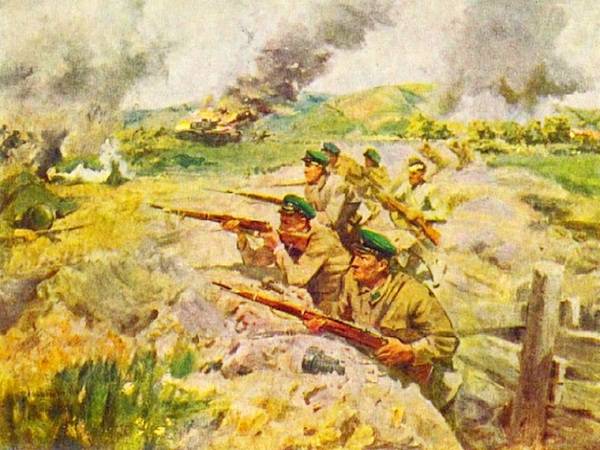
The attack of the enemy found most of the Soviet units in the border zone in a tactically disadvantageous position. Some divisions, for example, in the Baltic Special Military District, managed to take their positions on the cover plan, but most only moved to designated defense sectors or areas of concentration and were forced to go into battle with the move [Statyuk I. Defense of the Baltic States. 1941, p. 15-16]. In this case, all this was done under the enemy's constant airstrikes. The air defense system was not on alert and therefore could not cover ground units.
As a result of the fighting from 22 June to 9 July, the troops of the North-Western Front did not fulfill the tasks set for them. They left the Baltics, suffered heavy losses, and allowed the enemy to advance 500 km deep into Soviet territory.
The troops of the Western Front from June 22 to July 9 suffered significant losses and were unable to complete the tasks assigned to them. The enemy moved deep into 550 km, captured almost all of Belarus and went to the Dnieper [The history of World War II 1939 - 1945: In 12-t. T.4., C. 47].
The troops of the South-Western Front (SWF) met an enemy strike with sturdy defenses and counterstrikes. With great difficulty and considerable losses of the German 1TG and the 6 Army, they still managed to advance from the Sokal area in the direction of Dubno [Davydenko A. Fire Triangle, p. 4]. The command of the USP, having determined the direction of the main attack of the enemy, decided to launch a counterstrike. Against the German 1TG, the 15, 8, 9 and 19 Mechanical Corps were advanced from the depths into the Brody area. But as a result of the lack of a unified leadership, proper intelligence (especially air), a clear interaction between tanks, aircraft and artillery, as well as the result of the corps engaging in parts, right from the march, the counter-attack turned into a series of separate counter-fights and achieved the goal [Koval M. To the history of border battles in Ukraine, c.77]. In this situation, the Soviet command decided to withdraw troops until July 9 and take up defense along the old line of fortifications on the border of 1939.
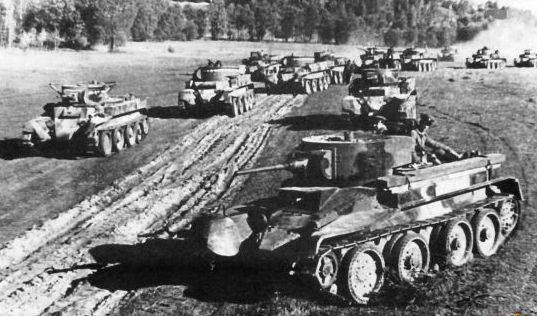
The general withdrawal of the South-Western Front troops took place in a difficult situation. The rates of advance of the enemy’s tank and motorized divisions were higher than the maneuver of the Soviet reserves. 8 July 11th German Tank Division captured Berdichev. On July 9, the thirteenth tank division, breaking the unfinished northern front of the Novograd-Volynsky UR, broke into Zhytomyr, and on July 11, the 3-th motorized corps of the enemy entered Kiev UR [A.A. Strokov History of military art, c. 363].
Thus, the border battle ended for the USSR difficult. The Red Army did not fulfill the tasks assigned to it in repelling the enemy’s attack and preventing it from entering the territory of the USSR, and suffered great human and material losses. If before the war, the border districts had numerical superiority over the enemy in tanks and aircraft, in mid-July this advantage was lost. After the end of the period of border battles, the Soviet troops continued to conduct heavy defensive battles in the Leningrad and Smolensk sectors and in the territory of Ukraine for the next three months.
Sources:
Anfilov V.A. The beginning of World War II (htpp // www. Militera.ru)
Veremeev Yu.G. Defense in the North. (Htpp // www.armor.kiev.ua / army / hist / oborona-z.shtml).
Davydenko A. Fire Triangle // Military Knowledge, 1991.- №9.
Dashichev V.I. Strategic planning of aggression against the USSR // VIZH.- 1991.- №3.
Zyuzin E.I. About the basics of the strategic deployment of the Red Army before the war // VIZH.- 1992.- №2.
History of the Second World War 1939 - 1945: In 12-t. T.4. / Prev Ed Commission A.A. Grechko.- M.: Military Publishing, 1975.-535 p., L. silt
Red Banner Kiev: Essays on History. 1919-1988 / I. A. Gera-Simov, P.G. Osipov.- 3-ed., Corr. and additional M.: Politizdat of Ukraine, 1989.- 543 s., 40 l.il., maps.
Krivosheev G.F. On the eve // VIZH.- 1991.- №6.
Makovsky V.B. Covering the state border on the eve of the war // VIZH.- 1993. No.5.
Martirosyan A.B. The tragedy of June 22: Blitzkrieg or treason? - M .: Yauza, Eksmo, 2006.- 784 with.
Petrov B.N. About the basics of the strategic deployment of the Red Army on the eve of the war // VIZH.- 1991.- №12.
Statyuk I. Defense of the Baltic States. 1941.- M.: Exprint, 2005. 40 with.
Strokov A.A. History of military art, M.: Military Publishing, 1966.- 656 p.
Fedorov A. The unfading feat of the Armed Forces of the USSR // Ukrainian Historical Journal. - 1985. No.5.
Sharov A. “I did not commit adultery ...” // Military Knowledge.- 1992.- №11.
Koval M. To the history of border battles in Ukraine // Ukrainian Historical Journal .- 1986.- №6.
Information